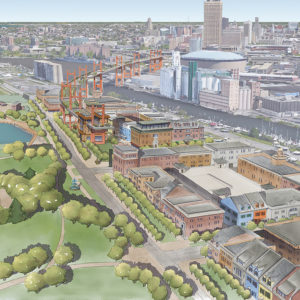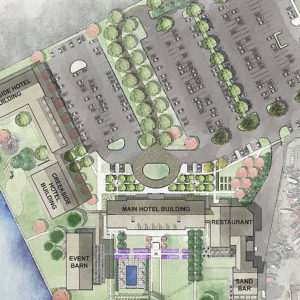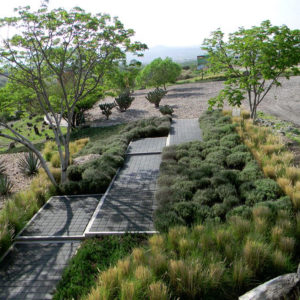KEY TAKEAWAYS
Built and Natural Environments Landscape Architects design the above-ground space in our communities between buildings.
Healthier Communities Landscape Architects design walkable outdoor spaces and communities that encourage increased activity and fosters human interaction.
Site Analysis When a new building’s structure and site are designed together, the result is a stronger, healthier building.
Every landscape architect has heard the phrase, “can you take a look at my yard?” While landscape architects love nature and plants, garden design is a fraction of what they do.
You know that you are experiencing the work of an architect when you look up and see a ceiling and you know that you are experiencing the work of a landscape architect when you look up and see the sky. While this is an over simplified description, it’s also fairly accurate.
In general terms, landscape architects design the above-ground space in our communities between buildings. Landscape architects determine building location, pedestrian and vehicular circulation patterns, and design the exterior amenities created by the spaces between structures and public infrastructure, such as plazas, parkways, streetscapes, and parks. They collaborate with building architects and make recommendations on building form to best suit the site and surrounding properties. In some cases, they start before other design teams with feasibility planning studies that consider the larger context and unique site characteristics of various locations to help their clients decide where to acquire property and build.
When building design intentionally reacts to the surrounding landscape, it can decrease energy use, improve interior and exterior user comfort, and lower earth moving and utility installation costs. It helps to preserve the ecosystem services associated with a pre-developed site such as water quality, runoff infiltration, oxygen production, and carbon sequestration. Designing the structure and site together can improve quality of life and foster community through human interaction. For example, an interior community space that spills out into a central courtyard or retail that activates a public streetscape and improves business via visibility.
Landscape architecture combines design, nature, construction, and science. They form successful project teams by partnering with sister professions including civil engineers, architects, structural engineers, planners, conservationists, soil scientists, biologists, artists, geotechnical engineers, and hydrologists.
Landscape architects design at macro, mid, and micro scales:
Macro Scale: Planning
 Landscape architects are trained in planning and must have a working understanding of the planning practice to earn their professional license. As a result, they often participate and/or lead planning projects for towns and cities.
Landscape architects are trained in planning and must have a working understanding of the planning practice to earn their professional license. As a result, they often participate and/or lead planning projects for towns and cities.
Planning decisions made by landscape architects can lead people into living healthier and happier lives. For example, with good planning, people live within walking distance of amenities, i.e., bakery, coffee shop, grocery store, library, school, and they will be more likely to walk to their destination. Simple moves like this can effectively increase physical activity, decrease carbon footprint, and foster community by creating opportunities for neighbors to meet while going about their everyday activities.
Mid-Scale: Master Planning
 Masterplans are overall strategic plans and implementation strategies created by landscape architects for campus scale projects: institutional, education, recreation. Many people do not realize that the college campus they hang out on or the business park they work in was most likely designed and planned by a landscape architect.
Masterplans are overall strategic plans and implementation strategies created by landscape architects for campus scale projects: institutional, education, recreation. Many people do not realize that the college campus they hang out on or the business park they work in was most likely designed and planned by a landscape architect.
Micro Scale: Site Design
 At the smallest scale, landscape architects design sites like parks, plazas, and residential properties. Planning concepts such as proper adjacencies and intentional circulation patterns that encourage physical fitness and social interaction also come into play at the site level. Landscape architects design places for all ages, abilities and backgrounds, fostering a sense of ownership and safety, wayfinding, and long-term operations and maintenance. They do this while striving to protect the planet, encourage equitable communities, take care of their clients, and design to codes and regulations.
At the smallest scale, landscape architects design sites like parks, plazas, and residential properties. Planning concepts such as proper adjacencies and intentional circulation patterns that encourage physical fitness and social interaction also come into play at the site level. Landscape architects design places for all ages, abilities and backgrounds, fostering a sense of ownership and safety, wayfinding, and long-term operations and maintenance. They do this while striving to protect the planet, encourage equitable communities, take care of their clients, and design to codes and regulations.
At all scales, the primary mission for landscape architects is to ensure the health, safety, and welfare of the public and create places where people can form memories, create relationships, and enrich their lives. Designing the places where people live, work and play is a great responsibility. Our environment must reflect the values that our community strives to embody.
